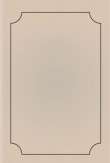You are here
قراءة كتاب Trinity Site: 1945-1995. A National Historic Landmark, White Sands Missile Range, New Mexico
تنويه: تعرض هنا نبذة من اول ١٠ صفحات فقط من الكتاب الالكتروني، لقراءة الكتاب كاملا اضغط على الزر “اشتر الآن"

Trinity Site: 1945-1995. A National Historic Landmark, White Sands Missile Range, New Mexico
significantly damage the house. Most of the windows were blown out, but the main structure was intact. Years of rain water dripping through holes in the roof did much more damage. The barn did not do as well. During the Trinity test the roof was bowed inward and some of the roofing was blown away. The roof has since collapsed.
The house stood empty and deteriorating until 1982 when the U.S. Army stabilized the house to prevent any further damage. Shortly after, the Department of Energy and U.S. Army provided the funds for the National Park Service to completely restore the house. The work was done in 1984. All efforts were directed at making the house appear as it did on July 12, 1945.
Afterwards
The story of what happened at Trinity Site did not come to light until after the second atomic bomb was exploded over Hiroshima, Japan, on August 6. President Truman made the announcement that day. Three days later, August 9, the third atomic bomb devastated the city of Nagasaki, and on August 14 the Japanese surrendered.
Trinity Site became part of what was then White Sands Proving Ground. The proving ground was established on July 9, 1945, as a test facility to investigate the new rocket technology emerging from World War II. The land, including Trinity Site and the old Alamogordo Bombing Range, came under the control of the new rocket and missile testing facility.
Interest in Trinity Site was immediate. In September 1945 press tours to the site started. One of the famous photos of ground zero shows Robert Oppenheimer and General Leslie Groves surrounded by a small group of reporters as they examine one of the footings to the 100 foot tower on which the bomb was placed. That picture was taken Sept. 11. The exposed footing is still visible at ground zero. On Sept. 15-17, George Cremeens, a young radio reporter from KRNT in Des Moines, visited the site with soundman Frank Lagouri. They flew over the crater and interviewed Dr. Kenneth Bainbridge, Trinity test director, and Capt. Howard Bush, base camp commander.
Back in Iowa, Cremeens created four 15-minute reports on his visit which aired Sept. 24, 26, 27 and 29. A 15-minute composite was made and aired on the ABC Radio Network. For his work Cremeens received a local Peabody Award for "Outstanding Reporting and Interpretation of the News."
At first Trinity Site was encircled with a fence and radiation warning signs were posted. The site remained off-limits to military and civilian personnel of the proving ground and closed to the public.
In 1952 the Atomic Energy Commission let a contract to clean up the site. Much of the Trinitite was scraped up and buried. In September 1953 about 650 people attended the first Trinity Site open house. A few years later a small group from Tularosa visited the site on an anniversary of the explosion to conduct a religious service and prayers for peace. Similar visits have been made annually in recent years on the first Saturday in October.
In 1967 the inner oblong fence was added. In 1972 the corridor barbed wire fence which connects the outer fence to the inner one was completed. Jumbo was moved to the parking lot in 1979.
Visits to the site are now made in April and October because it is generally so hot in July on the Jornada del Muerto.
White Sands Missile Range
White Sands Missile Range has developed from a simple desert testing site for the V-2 into one of the most sophisticated test facilities in the world. The mission of White Sands Missile Range begins with a customer--a service developer, or another federal agency, which is ready to find out if engineers and scientists have built something which will perform according to job specifications. It ends when an exhaustive series of tests has been completed and a data report has been delivered to the customer.
Between the beginning and the end of the test


